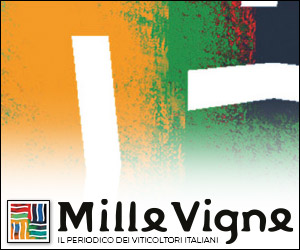Lorenzo Biscontin
This year we are carrying out a survey asking the operators we meet the same two questions:
– What is the main threat to wine today?
– What is the main opportunity?
The questions are deliberately open, broad and sudden, in the sense that we do not anticipate them, because we want the answers to be instinctive, that people say what in marketing research is called “top of mind” without thinking too much about it and therefore without the self – conditioning that leads to saying what is considered “appropriate” for the most varied reasons.
We asked them to all the people we interviewed for our articles, in any capacity and on any topic.
Then we continued at ProWein, publishing the interviews on our social networks and summarizing them in the article published on this site last April 11th.
We did the same thing at Vinitaly, also in this case the individual interviews have already been published on our social networks and in this article we try to see all the responses received in an organic way.
Let’s start by saying that the vision of Italian operators is more complex than the foreign ones I interviewed at ProWein. If the latter in fact unanimously agreed on the two threats of climate change and decline in consumption, only the order of priorities was reversed moving from the northern to the southern hemisphere, the spectrum of threats according to our compatriots is broader.
Obviously climate change and a drop in consumption were cited by several of the operators interviewed, but different things can be seen behind the drop in consumption. Some trace it back to a structural, cultural change in consumer behaviour, some to the demonization of wine as an alcoholic beverage tout-court, some to economic contraction and uncertainty over the global socio-political situation.
Equal importance is given to the threat represented by the lack of propensity for innovation that characterizes the 360° sector: product, communication, packaging, etc.
It is interesting to note how two interviewees indicated de-alcoholised wines (to use the official EU terminology) as a threat as they question the quality, characteristics and historical values of the wine. A sign that the vision towards this category is still debated.
Opportunities are often seen as the mirror image of threats, especially in the ability to grasp ongoing changes in scenarios to intercept, maintain or regain consumption styles. From the profile of wines, including alcohol-free ones, to the means and contents of communication, etc… new ways must be found to involve consumers, particularly those of the younger age groups.
Wine tourism can play a role in this, with its intrinsic ability to bring people closer to wine, its places, those who make it, its history and its culture.
Obviously our investigation has no statistical value, but it would be wrong to underestimate the usefulness of qualitative research. Fergal Quinn, the founder of the Irish supermarket chain Superquinn, attended the focus groups organized weekly with the customers of his stores because he said that it was useful to listen to the general opinion, but to take the cue from that one person who was right.
The reason, however, is not absolute: something that works for one winery will not work for another.
We therefore invite you to go to the on demand section of the Events Area of our metaverse and watch the playlist with all the interviews to find the right inspiration for you.
For our part, we take that of Carlotta Gori, director of the Chianti Classico Consortium who cited the attack on the consumption of wine as an alcoholic drink as a threat, but at the same time recommends not constantly communicating the negativity of the sector because it ends up broaden its perception.
And as an opportunity you point out the affirmation of wine as a product linked to civilisations, cultures and histories where producers are custodians of the environment.
That is, believing in the modernity of the classic values linked to wine, because they correspond to a large extent to those sought by large segments of the market. Just remember to add a little joy and empathy.



